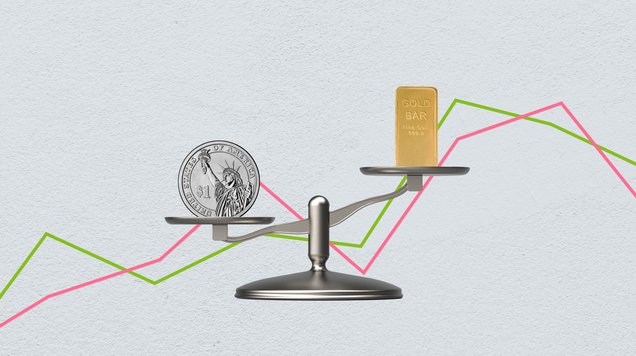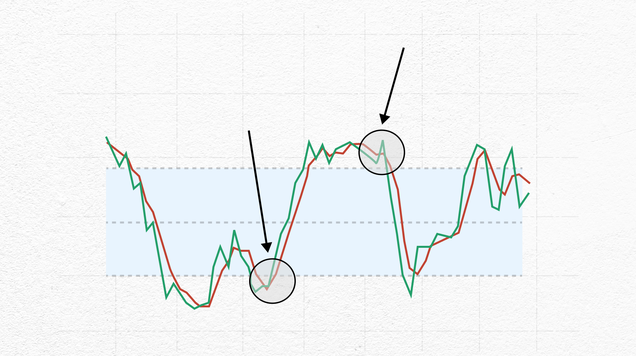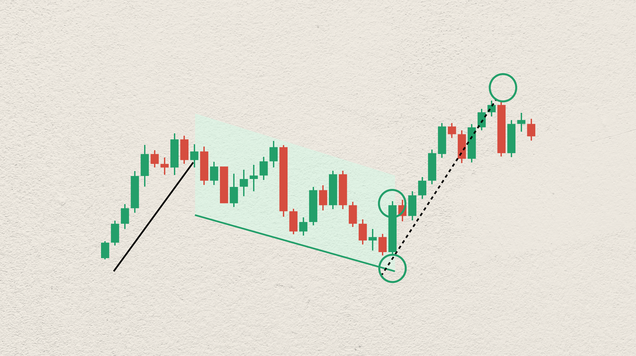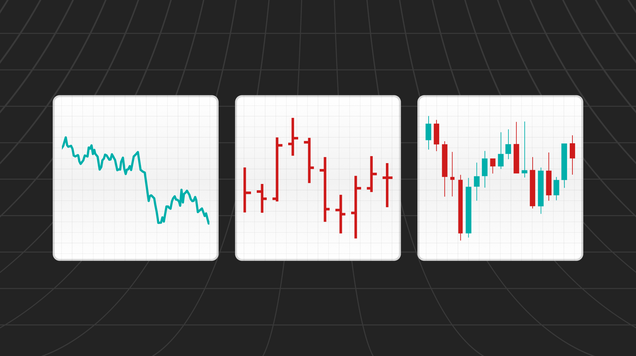Supply and Demand: How they impact financial markets
Understanding this fundamental economic principle is vital for enabling traders to prevent risk and make profits in volatile markets.

The balance between supply and demand is what determines prices in forex and stock markets; as higher demand drives prices up but higher supply will drive prices down
Economic indicators, earnings reports and market sentiment influence the balance between buyers and sellers which can cause rapid price changes
Dramatic changes in supply and demand levels stir up volatility on financial markets, and these price moves are essential for traders to make profit
Reversal trading can impact market sentiment as when traders anticipate a reversal, they may start selling or buying in large volumes which creates false surges in supply or demand
The role of supply and demand in determining prices
Supply and demand are fundamental principles of economy that drive price movements financial markets. The price of an asset, like currency pairs or stocks, is determined by the balance between its supply and demand. When the supply of a currency or stock is greater than its demand, its price falls. Conversely, when the demand for a currency or stock is greater than its supply, its price rises.
In the forex market, supply and demand also determines the exchange rate of currency pairs. Let's use the EUR/USD major pair as an example. If there is a high demand for euros and a low supply of US dollars, the exchange rate will rise. This means that one euro can buy more US dollars. If there is a low demand for euros and a high supply of dollars, the exchange rate will fall, meaning that one euro will convert to less US dollars.
Supply and demand work similarly in other markets like stocks and commodities. For example, oil prices surged after it was announced by Saudi Arabia and other members of OPEC+ to cut back on their oil output. Brent Crude, which is considered the global oil benchmark as it covers oil collected in the North Sea, experienced a notable increase of 5.31%, reaching a price of $84.13 per barrel; and WTI, the US oil benchmark, also rose 5.48% to $79.83 when the news was released.
Common factors causing volatility in financial markets
Volatility is a term used to describe the degree of fluctuation in prices, which means how much prices move on financial markets. In the context of supply and demand, volatility refers to the extent to which the supply and demand curves shift as a result of changes in market conditions. When the curves shift rapidly and drastically, it creates a high level of volatility which prevent traders and investors from predicting future market movements.
Volatility in supply and demand is a natural part of market behaviour, and in forex and stock markets, it’s affected by factors such as economic indicators, company earnings reports, geopolitical events, natural disasters and market sentiment. Any of these factors can shift the balance between buyers and sellers and lead to price changes. Some factors affect all markets in the same way, while other factors have a significantly greater impact.
In the forex market, volatility can be caused by changes in interest rates, political events and economic indicators. For example, a decision by the European Central Bank (ECB) to increase interest rates could attract foreign investors who want to invest in the Eurozone and earn a higher return on their investment. As a result, the demand for euros increases, causing the exchange rate to rise.
In the stock market, earnings reports, market sentiment and company news are often the main causes for volatility. If a company releases a positive earnings report indicating strong financial performance, the investor confidence in the company may rise leading to higher demand for its stock and an increase its stock value. On the other hand, if a company announces bad news, such as a decline in profits, this may lead to lower demand for the stock which will cause its price to fall.
During an economic recession, the demand for goods and services may decrease, leading to a drop in prices. This shift in demand can cause the supply curve to shift leftward, resulting in lower prices.
Similarly, natural disasters such as hurricanes or earthquakes can disrupt supply chains, leading to a decrease in the supply of certain goods and services. This shift in supply can cause the demand curve to shift upward, leading to higher prices.
Volatility in supply and demand can create both opportunities and risks for traders and investors. Understanding the factors that cause volatility and developing strategies to manage risk can help traders capitalise on market opportunities while minimising their exposure to potential losses. By monitoring market conditions and monitoring economic and political developments, traders can make informed decisions for navigating financial landscapes.
It’s essential to note that supply and demand are not isolated, as they interact with other economic principles such as elasticity, market psychology and market efficiency. For instance, if the demand for a particular currency or stock increases too rapidly, the price may become overvalued, leading to a correction as traders and investors adjust their positions.
Reversal trading can impact supply and demand dynamics in forex market
In the forex market, reversal trading can also have an impact on the supply and demand of a currency by influencing the behaviour of traders and investors in the market. When traders identify a potential reversal in the price of a currency, they can affect market dynamics by buying or selling the currency based on assumption.
This means that if traders identify a level of demand for a currency and anticipate a reversal, they will start to buy and increase its demand. As the demand increases, the price will rise before reverting to its original level. The increase in demand can also create a feedback loop, where other traders and investors jump on trends by buying assets with rising prices or short selling on falling prices.
Market analysts will often refer to prices rising from increased demand as a bullish or optimistic sentiment, and rising supply or pessimistic sentiment as bearish.
Traders who can accurately identify potential reversals and take advantage of them can potentially profit from these changes in supply and demand. However, it's essential to remember that financial trading is inherently risky and volatile in nature, so it’s always recommended that traders should practice proper risk management techniques to minimise their potential losses.
Volatility in supply and demand can create both opportunities and risks for traders and investors









